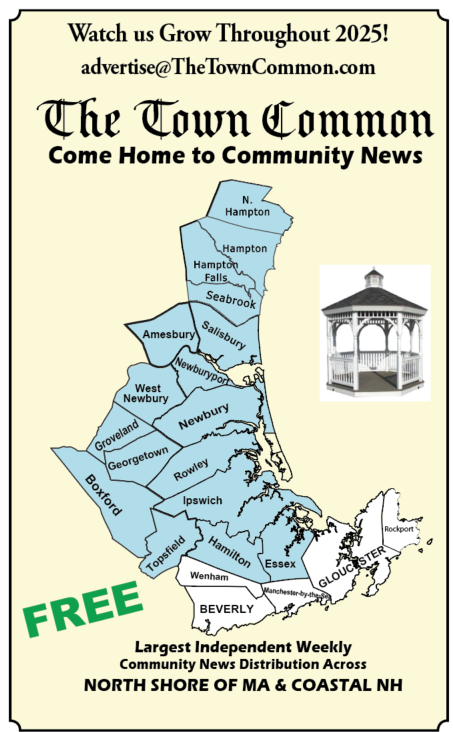NEWBURYPORT – You’re walking along the popular Clipper City Rail Trail, enjoying the day, talking with a friend or partner while soaking in the views, when suddenly an ebike flies by you with no warning.
It doesn’t happen often, but there are complaints being heard by city officials and written about by trail users on social media that the increasingly popular motorized bikes are a nuisance.
Geordie Vining, the city’s senior planner, who oversaw the design and construction of the trail, wrote, “I have heard some complaints about e-bikes in particular going too fast on the Clipper City Rail Trail, and there are similar complaints on other trails elsewhere in the state and country.”
He wrote that there will always be some friction between trail users on multi-use trails, which combine bicyclists and pedestrians. “In a more ideal world, we would have more physical space – as well as more funding – to separate the two user groups.”
During the design phase for the trail, city officials thought about how to create separation, but “it turned out not to be feasible, and there is no physical retrofit option at this point,” he wrote.
Instead, Vining and others designing the trail tried to minimize these conflicts “by following best practices on the trail’s sight lines, width, shoulders, curves, etc.” he wrote.
In their defense, ebike riders complain that they don’t have many good places to ride. Someone who identified as “Friendly neighborhood e-biker” wrote, “I’m one of those younger males on an e-bike I see folks complain about all the time and I would just like to say us e-bike users are not trying to inconvenience you. There’s just no infrastructure built for e-bikes in the area.”
He rides on Rte. 1A in Hampton, NH, where the side of the road is bumpy and the road has many large trucks that block his view of pedestrians. “It’s far safer for me and pedestrians for me to be in the road,” he wrote.
On the road, he is limited to traveling 24 miles per hour. So, the cars slow down behind me or they ride next to me.
His solution is more bike lanes so bikers do not have to slow down traffic and he can more easily see pedestrians.
Having a speed limit on the Clipper City Rail Trail is not practical, Vining wrote. “Most bicyclists do not have a speedometer on their bikes and would be unaware if they are speeding.”
And having the Newburyport police enforce a speed limit is also impractical. “It is rare for any community to have sufficient resources to provide a daily or weekly significant police presence with radar guns, etc. along the miles of trail and among the thousands of users.”
Instead, most rail trails have to depend on general rules of trail etiquette, Vining wrote.
“I have had some discussions over the past few years with the Coastal Trails Coalition, as well as individual citizens, and the city’s Parks Manager about pursuing a more robust signage and public education/outreach campaign about trail etiquette (moderate speeds, yielding, promoting slowing, calling out and bell ringing when passing pedestrians, etc.),” he wrote.
But he admitted there has not been much traction.
The existing trailhead signs include the message that All trail users should be alert, aware and respectful of others. Keep to the right of the trail, and politely warn people when you are passing on the left. Bicyclists should yield to pedestrians.
But Vining said only people new to town are reading the trailhead signs. “I do not think it would hurt to add some additional signs, such as the one attached, but to be honest I think such signs would likely be unseen/ignored by most bicyclists who are not already practicing common sense etiquette and safety. But perhaps they could influence someone.”
The rail trail is used and enjoyed by thousands, according to frequent surveys.
“While we have received some anecdotal reports of conflicts between pedestrians and bicyclists, particularly e-bikes – and I have no doubt that these incidents were bothersome and upsetting to some people – there is no evidence that this represents a significant overall problem or pattern for the big majority of trail users,” Vining wrote. “Personally, I have used the Rail Trail hundreds of times over the years as both a pedestrian and a bicyclist, and actively observed trail user interactions for 15 years. Occasionally there is an issue. Usually there is not.” ♦



